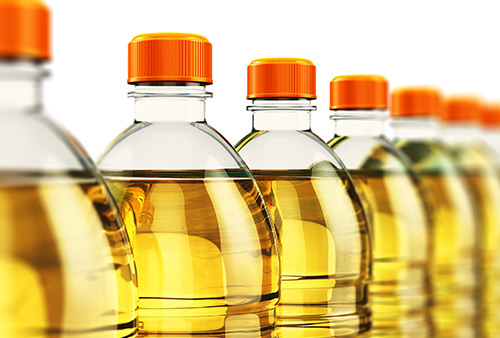EDIBLE OIL
Projects


The history of use of edible oils dates back to 2000 BC when the Chinese and Japanese produced soy oil and Europeans had begun to produce olive oil. Some oils have become available only recently, as extraction technology has improved. Corn oil first became available in the 1960s. Cotton oil, watermelon seed oil, grapeseed oil, and others are now being considered as ways to make use of seeds that were, until recently, considered waste.
We supply full range of edible oils in consumer packs as well as in bulk. We have a very strong base of suppliers in Ukraine, Russia, Turkey, Egypt, Malaysia and Indonesia.
SUNFLOWER OIL
Sunflower oil is the non-volatile oil pressed from the seeds of sunflower. Sunflower oil is commonly used in food as a frying oil, and in cosmetic formulations as an emollient. The expressed oil has a neutral taste profile. The oil contains a large amount of vitamin E. The world’s largest producers of sunflower oil are Ukraine and Russia.
Origins: Ukraine I Egypt I Turkey
SOYABEAN OIL
Soybean oil is a vegetable oil extracted from the seeds of the soybean. It is one of the most widely consumed cooking oils and the second most consumed vegetable oil. As a drying oil, processed soybean oil is also used as a base for printing inks (soy ink) and oil paints.
Origins: Argentina I Brazil I EU
PALM OIL
Palm oil is the second largest source of edible oil, next only to soybean. It contributes approximately one-fifth of the world’s production of oils and fats. Palm oil and palm kernel oil obtained from the pulp and seed respectively. Palm olein is the liquid fraction obtained during fractionation of palm oil. There are different grades of palm olein based on the iodine value (IV) with potential for specific end-use applications. A more unsaturated fraction called super olein is obtained by further fractionation of olein. Super olein has better clarity, stability, and lower tendency to turn cloudy compared to normal olein. Among all the palm oil fractions, it is only palm olein that is suitable to be used as cooking oil. Palm olein has a maximum cloud point of 10°C.
Origins: Malaysia I Indonesia

